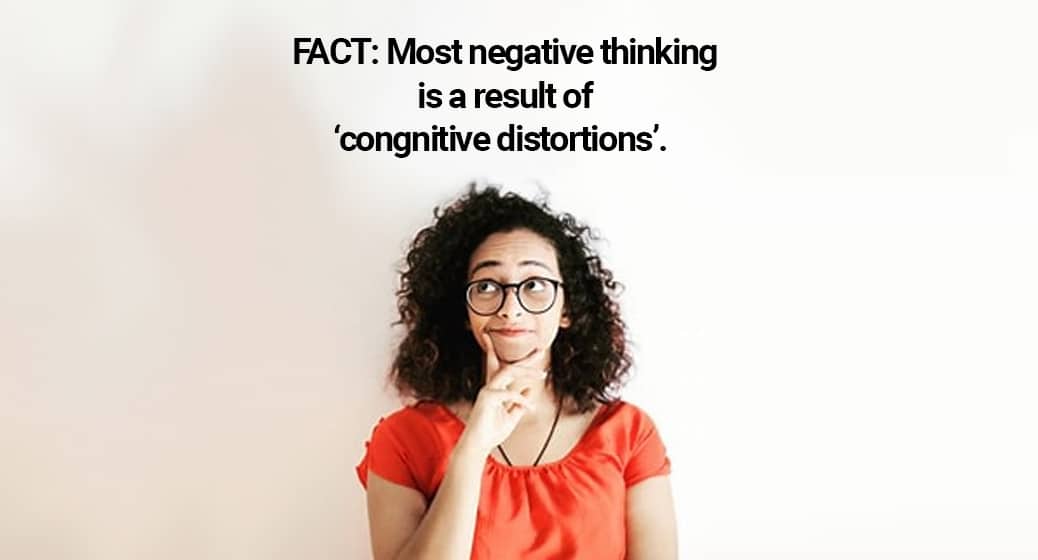Working on Cognitive Distortions is the basis for many forms of treatment and help offered from professionals in the Mental Health field, Life Coaches and even everyday friendships. In my practice, I like to explain Cognitive Distortions as our “screwed up way of thinking” that we all have.
I see that people feel so isolated and alone when they are struggling with their thinking and begin to personalize that it “must all be them.” When Cognitive Distortions are normalized and people become aware that they are common and that our thoughts influence our emotions, versus the other way around, they are more apt to work harder to slow down their thinking, recognize which Cognitive Distortions are more common to them and accept advice on how to combat them.
This is a very good time to either introduce or review Cognitive Distortions with clients, and with ourselves, as thinking and communication has had to change because of COVID, more technology use (virtual working/school conditions), and just different stressors in life that have not been experienced by some in their lifetime (a pandemic, economic decline, increase societal violence and the list goes on). People are striving on a daily basis to have better interpersonal relationships and one thing that is stopping this is Cognitive Distortions people carry with themselves.
Step 1: Explain Common Cognitive Distortions
- Magnification and Minimization: Oversimplifying or Dismissing the importance of events. This belief carries that one’s own achievements are unimportant, or conversely that their mistakes are overly important.
- Catastrophizing: Only able to see the most extreme and worst possible outcome of a situation, every time.
- Overgeneralization: Making sweeping interpretations from one or select events. “I felt nervous during the date. I am (or why am I) always so nervous.”
- Personalization: The strong irrational belief that solely oneself is responsible for circumstances outside of their own control. “My parents are always upset. They would be fine if I just did more to help them.”
- Jumping to Conclusions: Defining the meaning of an event with little or no factual evidence.
- Mind Reading: Filtering the thoughts, beliefs, and intentions of others without adequate, factual, unbiased evidence. “I did not get invited to the party. They probably think I am boring.”
- Emotional Reasoning: The assumption that emotions reflect the way things really are. “I feel like a bad friend, therefore and without a doubt I am a bad friend.”
- Disqualifying the Positive: Accepting only negative aspects of an event while pushing away the positive. One may receive many good scores on a test but focuses only on the negative scores and feedback.
- “Should” Statements: The distorted belief that things should be a certain way–either about themselves or others. “I should always be available to others even at the last minute.” “My friend should always answer when I call.”
- All-or-Nothing Thinking: Absolute thinking such as “always”, “never”, or “every”. “I never meet others’ expectations on anything in my life.”
Step 2: Be empathetic when individuals discover their Cognitive Distortions and ask them to keep track of when this thinking pattern is coming up.
Look for triggers (people, places, things), times of day, or other feelings surrounding this thinking. In being empathetic, teaching individuals Cognitive Distortions are learned thinking, which can be worked on and changed. No toddler walks around catastrophizing things so there is hope that one does not have to stay STUCK in the rut of unhealthy thinking.
Step 3: Once common Cognitive Distortions are explained and exemplified to people the discussion and help flows easier because they can see how destructive thinking can be and that while a thought is not a choice-choosing to act, dwell, and engage in the thought is a choice. I explain thinking to clients like a train:
- The train is barreling into our head without us even realizing it. We have no control over a thought that comes into our head.
- The thought train stops at the brain or “train station.”
- We have the choice to either let the thought train sit at the brain “train” station and dwell on this thought, bringing in irrational, assumptive thinking.
- Or we have the choice to send that thought train on its way down the path.
People are struggling with problems and not finding happiness today. Problems can survive and create havoc in our lives only, only, when they are supported and strengthened by particular ideas, beliefs, and cognitions. Tarnished, worrisome, negative, disempowering, and screwed-up thinking destroys happiness.
Most people rely on others to control their own feelings. People simply have not learned the impact of their perceiving, thinking, anticipating, and concentrating. They don’t know how they are creating experiences that affect them every minute of every day. And when it becomes time for change, all they can do is rely on the old methods, steps, and habits that got them in an undesirable situation in the first place.
The first step in combating Cognitive Distortions is by being aware of what they are and what one is thinking. Then be honest with oneself and perhaps even ask another person to hold oneself accountable for when “Screwed Up” thinking surfaces. Often, one is so wrapped in distorted thinking it takes time to realize it is going on. But with practice and honesty forming new thinking habits will come.
For help with any of the above, I would love to hear from you at jess54301@gmail.com or visit www.worthcousneling.com
Blessings,
Jessica
Keep Reading
Want more? Here are some other blog posts you might be interested in.








